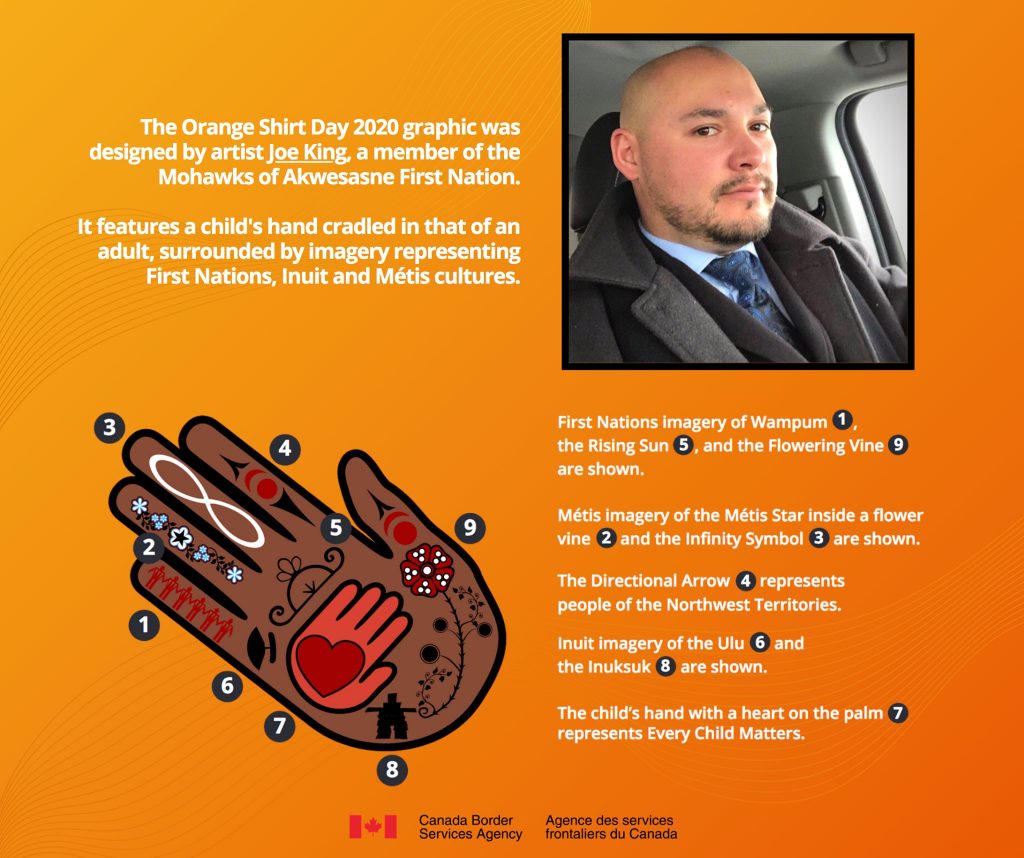Orange Shirt Day: The Movement Behind Truth & Reconciliation
Orange Shirt Day honours Indigenous children and their descendants who have been affected by the Residential School system. This day is to educate society about Residential School trauma within Canadian history.
Orange Shirt Day was first established in 2013 as part of a movement to promote awareness and education of the Residential School system and the transgenerational impact on Indigenous communities throughout Canada. The date of September 30th was chosen for its significance: this is was the time of year when Indigenous children were forced from their families to attend Residential Schools, at times, far from their families reach. This date was also purposefully chosen to be observed at the end of September to allow for students and teachers to settle into the new school year, and to inspire inclusion with schools’ anti-bullying and anti-racism policies.1
Brief History of the Residential School System:
In 1879, three years after the implementation of the Indian Act, John A. Macdonald was instrumental in the establishment of the first government-funded Residential Schools to mark the beginning to what is now known as the Residential School system2. Macdonald’s intentions in the purpose of Residential Schools was clear:
“When the school is on the reserve, the child lives with its parents, who are savages, and though he may learn to read and write, his habits and…[thoughts] are Indian. He is simply a savage who can read and write…Indian children should be withdrawn as much as possible from the parental influence, and the only way to do that would be to put them in…schools where they will acquire the habits and…[thoughts] of white men.”3
John A. Macdonald
However, it was not until 1920, when the Indian Act was amended to legally require school-aged children to attend these schools and reflect the horrible agenda of Canada’s first Prime Minister. By 1931, there were over eigthty government-funded Residential Schools across Canada operating at one time. Throughout the preceeding years over 130 Residential Schools had operated in Canada and approximately 150,000 Indigenous children attended.4 At least 6,0005 of these children died due to a variety of reasons which included abuse (mental, emotional, physical, and sexual), neglect, overcrowding, malnourishment, sickness, and attempts to run away.6 The last Residential School was not closed until 1996.
“…those of you who are interested in the Residential School story need to understand something that is very important, that it isn’t just about Residential Schools. [The Canadian Government] took our children away from us and placed them in the schools so that they could indoctrinate them into a different way of thinking… then they proceeded to go out and try to destroy the villages. So they undermined our leadership, they took away the power of Chiefs, they took away the power of women, they took away the power of our culture, they prohibited ceremonies, they prohibited gatherings, they prohibited all of the things that societies need to hold itself together. As many Survivors have observed. They took away our power. They took away our power to be who we were meant to be”
Truth and Reconciliation Commission Chair Senator Murray Sinclair7
The Story Behind the Orange Shirt: Phyllis Webstad’s Story:
“My name is Phyllis Webstad…I went to St. Joesph’s when I has just turned six in 1973-1974. I just went for one year…I’m the third generation. My grandmother went for ten years…my mother went and I went…My grandmother probably couldn’t afford it but she always bought a new set of clothes for all the kids going to the Mission and I was no exception. It was really exciting. I picked out an orange shirt and it was really shiny and it just sparkled…When I got there we got stripped..my orange shirt was taken away…To me orange has never been my friend. So I wear it today as a symbol of the healing that is taking place. Orange has always been to me…not mattering to anyone, nobody cared that we had feelings…just being insignificant. So to me that’s what orange means. Today, that’s why I wear it. That’s not the case anymore.”
Phyllis Webstad, 20138
By using a colour that representated how Phyllis felt she did not matter, she was able to heal and use it as a symbol of strength. Today, wearing an orange shirt on September 30th makes an important statement: Residential Schools were wrong and no child of any culture should ever be made to feel insignificant. EVERY CHILD MATTERS.9
“On behalf of the Government of Canada, I encourage all Canadians to take this opportunity to learn more about the history of residential schools in Canada, listen to the stories of survivors and their families, and reflect on how each of us can play a part in the journey of reconciliation. I also encourage everyone to wear an orange shirt today to help spread awareness, because every child matters.”
Prime Minister Justin Trudeau, 202110

- Orange Shirt Society. (2020). Orange Shirt Day: September 30th. Victoria, British Columbia, Canada: Medicine Wheel Education. p 82.
- The Truth and Reconciliation Commission of Canada. They Came for the Children. Manitoba: Library and Archives Canada Cataloguing in Publication, 2012. pp 5-6.
- “10 Quotes John A. Macdonald Made About First Nations.” Indigenous Corporate Training. June 28, 2016. https://www.ictinc.ca/blog/10-quotes-john-a.-macdonald-made-about-first-nations.
- Miller, J.R. (2012, October 10). Residential Schools in Canada. Retrieved September 16, 2022, from The Canadian Encylcopedia: https://www.thecanadianencyclopedia.ca/en/article/residential-schools
- Ibid
- Supra at 1, p 37.
- “Justice and Federal Commissioner Murray Sinclair Speech”. Truth and Reconciliation Commission. The Commemoration Project Events. Filmed by John Dell. Signal Point Media, 2013. DVD.
- Supra at 1, p 62.
- Supra at 1,p 14, 83.
- Prime Minister Justin Trudeau (2021, September 30). Statement by the Prime Minister on National Day for Truth and Reconciliation. Retrieved from Prime Minister of Canada: https://pm.gc.ca/en/news/statements/2021/09/30/statement-prime-minister-national-day-truth-and-reconciliation
